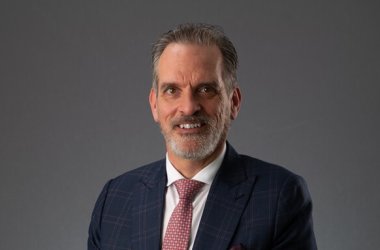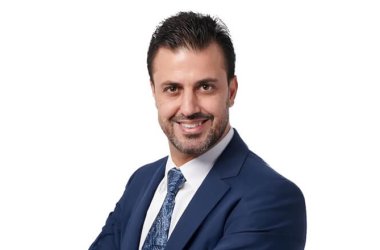 Oracle CEO Larry Ellison declared the company is ready to offer “the most comprehensive cloud on the planet Earth,” during a webcast event yesterday.
Oracle CEO Larry Ellison declared the company is ready to offer “the most comprehensive cloud on the planet Earth,” during a webcast event yesterday.
“It’s been a long time coming,” Ellison said of the Oracle Public Cloud, which encompasses Oracle’s suite of Fusion Applications delivered as both SaaS (software as a service) and PaaS (platform as a service) features, including the Java Cloud Service and Database Cloud Service. It’s also the home of Oracle Social Network, the company’s foray into Facebook-like collaboration tools for enterprises.
Most of the details discussed Wednesday were well-telegraphed, given that Oracle Public Cloud was first announced at the OpenWorld conference in October and the company had put up a website filled with specifics, save for details such as pricing and general-availability dates.
The applications will feature per-user, per-month pricing, Ellison said. But it still wasn’t clear by the end of the presentation whether all the components are broadly available now.
Meanwhile, Ellison’s proclamation of Oracle’s newfound cloud prowess on Wednesday stood in stark contrast to his past mockery of cloud computing as hype-filled “gibberish” applied improperly to long-standing technologies. Such jibes were nowhere to be found Wednesday as the CEO spun a broad strategic vision.
“We made a decision to rebuild all of our applications for the cloud almost seven years ago,” Ellison said of Fusion Applications, which are also available on-premises. “It took seven years of work, thousands of people, billions of dollars, to make the transition from being an on-premise application provider to being a cloud application provider, as well as an on-premise provider.”
Oracle is hoping these attributes will have special allure for customers, since they’ll be able to choose either deployment model and move applications between them.
Oracle is set to offer 100 different cloud applications, spanning ERP (enterprise resource planning), CRM (customer relationship management), HCM (human capital management) and other software categories, Ellison said.
Wednesday’s event also provided Ellison with an opportunity to tout what he called Oracle Public Cloud’s many advantages over rivals such as SAP and Salesforce.com, as well as to engage in some of his traditional competitive trash talk.
One major advantage that Oracle Public Cloud provides is better security for customers, according to Ellison.
“We have very comprehensive, fine-grained security in our system,” he said. The Central Intelligence Agency was Oracle’s first customer, and security “has been very, very deep in our culture for a long time,” he added.
“Your database is not commingled with other customers’ data,” Ellison added. “It’s a big difference between our cloud and others on the market.” Customers also get their own virtual machine, “so you are protected,” Ellison said. “Modern virtual technology is how we offer safety.”
Ellison has criticised the practice of multitenancy, a software architecture common in cloud services where a number of customers share a single application instance.
Multitenancy has long been cited as an advantage for cloud companies, since they can upgrade many customers at once, lowering costs, but Ellison turned that argument on its head.
“We think a modern cloud lets you decide when you want to upgrade, not have the cloud vendor tell you when you have to upgrade. We think that’s a very big deal. We’ll allow you, within reason, to decide when to upgrade,” he said. Customers will get about a one-year window to determine when an available upgrade is right for them, Ellison said.
Some customers may have questions about how often upgrades to Fusion Applications will actually be available, given that Oracle had been criticised for years over the delays in delivering the initial suite. But on Wednesday, Ellison portrayed the project’s timeline as something necessary and vital.
“If there’s one point I would like to make this afternoon, it’s how hard it was, how long it took, how many people were involved, how much it cost,” he said.
In contrast, rival SAP won’t have anything “for real” in the cloud until 2020, Ellison claimed. “I don’t think they’ll make it. Our applications will have eight years of maturing. 2020. Excellent vision. 2020. Great news program. 2020. Terrible year to get to the cloud.”
“All SAP’s got is SuccessFactors,” he said, referring to the cloud HCM (human capital management) vendor that SAP recently acquired. “I don’t think that’s enough.” Oracle has made cloud acquisitions of its own in the form of Taleo, RightNow and Vitrue.
Those remarks drew a hasty response from SAP on Wednesday.
“As usual, you can tell who Oracle is most worried about by the competitors they criticise most,” the company said in an emailed statement. “Building a profitable cloud business depends on scale — with 17 million users, SAP’s SuccessFactors business has the largest user base of any cloud apps provider.” SAP is also offering a “complete ERP suite for the cloud today” in the form of Business ByDesign, and has many other “loosely coupled” cloud applications, the company added.
However, Ellison may have been referring to the fact that SAP’s flagship on-premises ERP software, Business Suite, isn’t yet rewritten for the cloud and may not be for some time. ByDesign is aimed at smaller companies and divisions of larger ones.
Meanwhile, another plus for Oracle’s cloud is the fact it is based entirely on industry standards, unlike the competition, Ellison said.
“It’s very easy to take our cloud applications and extend them and integrate them with applications you have running on-premises,” he said.
What Ellison didn’t say is that many would-be Fusion Applications customers will choose the cloud deployment option due to the sizable technical hurdles involved in running them on-premises.
Oracle’s cloud also provides customers with a range of social networking-related features, including the ability to collaborate with one another and to reach out to customers on public social sites such as Facebook. At one point, Ellison demonstrated how a marketing professional could develop and deploy a Web store on Facebook without the help of IT staff.
Finally, Oracle’s cloud incorporates a superior core infrastructure, running not on farms of commodity hardware but on Oracle’s Exadata and Exalogic database and application server machines, which Oracle has heavily promoted for their high performance.
Exadata and Exalogic also provide superior fault tolerance and high availability, Ellison said. “If a component fails, a disk drive fails, it doesn’t matter.”
Those systems and others are now being offered with a new set of Platinum services offerings, which were also announced Wednesday during the event.





